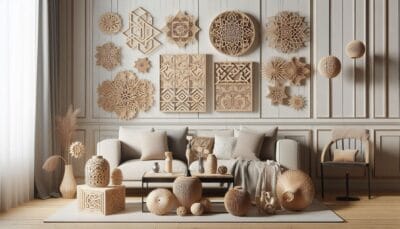
Repair of 3D models
 High-quality repair of 3D models for further processing
High-quality repair of 3D models for further processing
If you’re looking for professional 3D model repair services, you’ve come to the right place. Our teams specialize in editing and optimizing 3D files to ensure a flawless result for further CNC machining or 3D printing.
The process of repairing 3D models
Our 3D model repair process is efficient and convenient. You simply upload your 3D model on our website, and we will quickly provide you with a cost estimate. This allows you to save time and get a clear idea of the costs before you start.
Advantages of our services
We offer high-quality repair of 3D models suitable for various applications such as CNC machining, 3D printing, etc.
. Our specialists have extensive experience in editing, so we can eliminate flaws, improve quality, and optimize models for printing. This will help you achieve the best results in your work.
- 3D Modeling Services
- Repair of the grid
- Edit models
- Restore geometry
- Retopology
![]()
![]()
![]()
![]() Click here to upload or drag and drop your model to the canvas.
Click here to upload or drag and drop your model to the canvas.
The model is too large and has been resized to fit in the working field of the machine. [Hide]
The model is too large to fit in the cnc machine. [Hide]
The model is too large, a fitting cnc machine is selected. [Hide]
The model is too small and has been upscaled. The quality of the model differs from the original. Made to improve download times on the mobile version. You can see what a non-standard model looks like. [Hide]
Warning: The selected printer can not print in full color [Hide]
Warning: obj models with multiple meshes are not yet supported [Hide]
Warning: Unsupported DXF entity [Hide]
Warning: could not arrange models [Hide]
Bright is higher
Height (mm)
Model Stats:
| Material Volume: |
|
| Support Material Volume: |
|
| Box Volume: | cm3 |
| Surface Area: | cm2 |
| Model Weight: |
|
| Model Dimensions: |
x x
cm |
| Number of Polygons: | |
| Number of Shapes: | |
| Total Path: |
|
| Print Time (hh:mm:ss): |
|
HOW TO DO IT?
Just three steps to get a quote.
| Options |
3D model retopology ,Edit 3D models ,Repairing a 3D model mesh ,Restore the geometry of a 3D model |
|---|---|
| Формат файлу |
obj ,step ,stl ,stp |
Show only reviews in English ()
You must be logged in to post a review.
Description.
Repair of 3D models for further CNC processing (or 3D printing)
Introduction to 3D modeling and repair
3D modeling has become an integral part of modern manufacturing processes, including computer numerical control (CNC) machining. It allows you to create virtual images of objects, which can then be brought to life. Among the main advantages of 3D modeling is the ability to accurately reproduce the shapes and properties of materials, which contributes to more efficient design and reduced production costs. However, an important aspect that should not be ignored is the repair of 3D models, which is a critical step before further CNC processing.
During the process of creating 3D models, various problems can arise, such as errors in geometry, inconsistencies in topology, and other defects that can reduce the quality of finished products. These problems can adversely affect the performance of the CNC, leading to unpredictable results, reduced accuracy, or even damage to the equipment. Therefore, repairing models is a necessary measure to ensure their uninterrupted operation in subsequent stages of production.
When repairing 3D models, engineers and designers usually use specific software tools to identify and eliminate defects in the model. The repair process involves correcting outlines, reducing the number of polygons, and restoring the correct normals. This allows you to prepare the model for CNC machining, which in turn ensures optimal results during production. The availability of high-quality, flawless models is the key to successful CNC machining, which allows you to achieve high quality standards in the final product.
Typical problems of 3D models
In the process of creating 3D models, various problems can arise that interfere with their subsequent CNC (computer numerical control) processing. One of the most common problems is problems in the geometry of the models. These problems can manifest themselves in the form of missing or extra faces, incorrect connection of parts, and objects that are unsuitable for machining. It is important to remember that even minor geometric errors can significantly affect the quality of the final product, so identifying them at an early stage is essential.
Another common problem is incorrect scaling of 3D models. Object sizes that do not correspond to reality can lead to serious manufacturing errors. This is often caused by software settings or incorrect export parameters that affect the scaling of the object. It is extremely important to check the scale before processing, as this directly affects the accuracy of the parts.
Here are common mistakes that occur when creating 3D models for CNC milling:
- Incorrect size or scale:
- The model can be created in the wrong scale, which leads to errors during CNC machining. It is important to take into account the real units of measurement.
- Thin walls:
- Parts that are too thin or small may not be machinable. CNC machines have tooling limitations for small parts.
- Inconsistency of surfaces:
- If the surfaces of the model intersect, overlap, or contain holes, this can cause errors in the toolpath.
- Unoptimized grid:
- Too fine a mesh can unnecessarily slow down the generation of control programs. A mesh that is too coarse can distort model details.
- Incorrect orientation of the normals:
- Normals must point outward. If they point inward, the TNC may not interpret the model layers correctly.
- Lack of smooth transitions:
- Sharp corners or irregularities can lead to machining errors. Smooth contours ensure better cutting results.
- The file format is incorrect:
- Using formats that are not supported by the CNC (for example, non-standard CAD files) can lead to errors when importing the model into the CAM program.
- Lack of model validation:
- Skipping the verification step before transferring the model to the CNC can leave geometric errors uncorrected.
- Incorrect size or scale:
Models that are not optimized for a specific application (e.g., CNC milling or 3D printing) can cause performance issues
Methods of repairing 3D models
Repairing 3D models is an important part of the process of preparing them for further processing on computer numerical control (CNC) platforms. Among the main methods used to fix problems in 3D models are automated programs, plug-ins for 3D editors, and manual fixes.
Automated programs such as Meshmixer or Netfabb usually offer extensive functionality for detecting and correcting geometric errors. They apply algorithms that allow you to quickly and efficiently solve common problems such as irregular surfaces, incorrect normals, and mesh holes. The main advantage of such solutions is the speed and automation of the process. However, it should be borne in mind that not all errors can be corrected using automated methods, and in some cases, the quality loss may be unacceptable.
Plug-ins for 3D editors such as Blender, Rhino, or Fusion 360 can also come in handy. These tools allow users to make corrections directly within the program’s workspace. The advantages of such plug-ins are tight integration with the workflow and the possibility of detailed control when making corrections. On the other hand, mastering specific plugins may require additional knowledge, which can be a disadvantage for beginners.
Manual correction methods, such as editing vertices or edges of the model, can be effective in situations where the error is specific and cannot be handled automatically. However, these methods are more labor intensive and require considerable time and patience, especially for new users.
Thus, the choice of 3D model repair method depends on the specific requirements of the project and the user’s experience. By choosing the right tools, you can significantly improve the quality of the finished models for further CNC processing.
Preparation for CNC machining
Before uploading a 3D model for CNC machining, it is important to go through several key preparation steps. Proper model preparation not only improves the quality of the finished product, but also prevents possible problems during processing. The first step is to choose a file format. The most commonly used formats are STL, OBJ, or STEP, as they provide high accuracy of geometric data transfer.
To ensure better CNC machining accuracy, it is important to consider several key aspects of the 3D model mesh:
- Triangular Mesh:
- More versatile for difficult surfaces.
- Provides high detail, especially for curved or complex shapes.
- The smaller the triangles, the more accurate the processing will be, but this increases the amount of data processing.
- Mesh density:
- A denser mesh gives higher accuracy, but also requires more processing resources.
- Recommendation: Balance precision and performance. A mesh that is too dense can slow down milling.
- Water resistance of the model:
- The model should be “manifold”, i.e., it should not have any holes or irregularities in the mesh. This ensures correct generation of paths for the tool.
- The location of the normals:
- All normals must be correctly oriented (outward), otherwise the TNC may not process the model correctly.
- Model format:
- STL or STEP are popular formats for CNC. They provide an accurate conversion of the model into toolpaths.
In general, medium to high density mesh is often the best choice for CNC machining.
Finally, don’t forget to optimize your 3D models. Cleaning up the geometry, avoiding excessive polygons, and checking for errors are all steps that can help you achieve optimal results during CNC machining. All of these steps require attention, but the results can far exceed your expectations.
Check the quality of 3D models
Checking the quality of 3D models is an integral part of the process of preparing them for further CNC processing. The quality of the models will have a direct impact on the accuracy of the production, so it is important to ensure that they meet a number of clearly defined criteria. The main criteria are geometric accuracy, structural integrity, and aesthetic appearance.
Geometric accuracy indicates how closely the repaired model matches the specified parameters. The use of CAD (Computer-Aided Design) software can help verify the dimensions and distances between key points in the model. It’s also important to check that no deformations have occurred during the repair process, as this can negatively affect the machining results.
The structural integrity of refurbished models is an important aspect, as weak or incorrect connections can lead to breakage during CNC machining. To assess this quality, it is recommended to conduct mechanical tests using specialized programs. They are able to simulate the load on the model and help identify potential weaknesses.
Aesthetic appearance, while not critical to the functionality of the model, also plays a role, especially in the final stages of processing. To visualize the model, you can use rendering tools that provide a step-by-step check of the appearance and surface textures. Not only can these tools help identify aesthetic issues, but they can also make it easier to correct errors.
Thus, a systematic approach to quality control of repaired 3D models will reduce the risk of errors during CNC machining, which in turn will increase the efficiency and reliability of production processes.
Conclusions and recommendations
When repairing 3D models for further CNC processing, it is important to take into account several key aspects that affect the quality and accuracy of the finished products. First of all, you need to focus on the quality of the original 3D models. It seems that the main purpose of repair work is to correct errors in the models, but the processes of adapting the models to specific machining conditions are no less important. This includes adjusting the geometry, selecting materials, and optimizing control programs for CNC machines.
Secondly, continuous improvement of skills in this area is extremely important. Technological progress does not stand still, and new methods of repairing 3D models, as well as software improvements, open up new opportunities for professionals. By attending specialized courses, seminars, or workshops, you can significantly improve your knowledge and practical skills. It is also useful to keep up with updates in the field of CAD programs and processing technologies, as this allows you to remain competitive in the labor market.
It is also worth considering collaboration with specialists such as engineers, designers, and CNC operators. Effective communication between these professions helps to avoid mistakes and achieve optimal results in the process of repairing 3D models. Interaction with the team can also facilitate the exchange of experience and ideas, which becomes an important component of the successful completion of projects.
Thus, attention to detail, training, and collaboration are crucial aspects for effective repair of 3D models, which allows for the best results in subsequent CNC machining.







Reviews
There are no reviews yet.